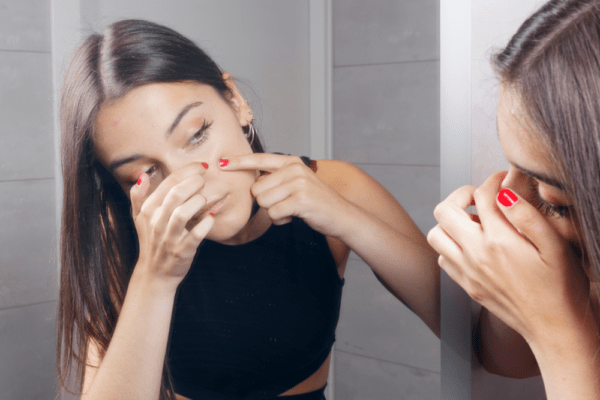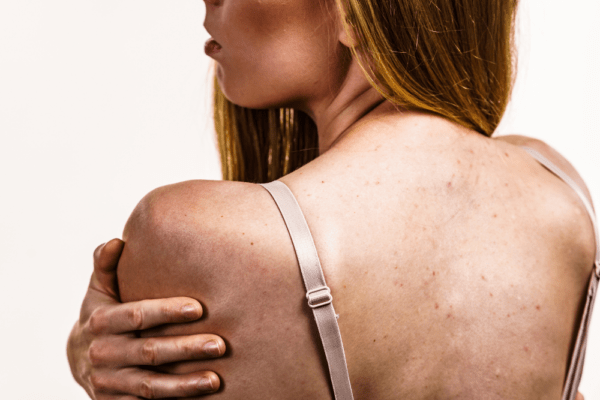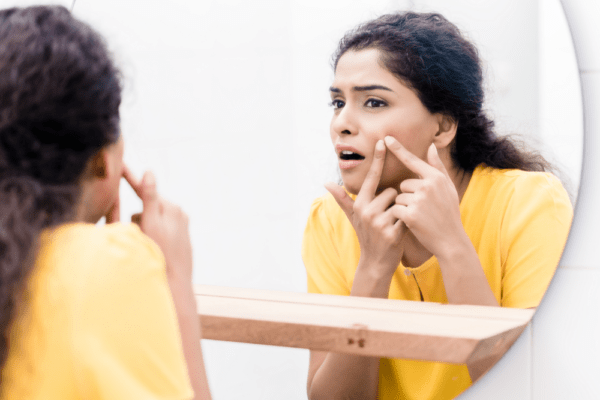Ever struggled with breakouts that wouldn’t seem to budge with any treatments you slather on it? this could be an indication that you could be dealing with fungal acne.
To begin with, fungal acne is not what you might think it is. The term fungal acne is actually a medical condition called pityrosporum folliculitis or Malassezia folliculitis. Though it may resemble to bacterial acne, this breakout is usually due to excess yeast or the fungus pityrosporum, also called Malassezia. It is pretty normal for this type of fungus to be living on the skin. It’s only when it gets out of hand that fungal acne leads to inflamed, itchy eruptions, usually filled with pus. The fungus inflames within the hair follicle and shows up as bumps and breakouts in areas like your T-zone (forehead, nose, chin), hairline, chest, shoulders and back. Another identification of fungal acne is their uniform shape and size, occurring in clusters of small little whiteheads. Some people are genetically inclined to yeast overgrowth and hence, are bound to experience fungal breakouts more frequently. Additionally, having chronic conditions like HIV and diabetes, which impact your immune system, can also predispose you to fungal acne.
Because fungal acne is often misdiagnosed as “normal” acne, it is sometimes frustrating to treat. The thing about fungal acne is that it can’t be treated by antibiotics and acne medications. Your skin microbiome can alter from changes in your eating habits, skincare routine, environment, medication and other reasons. Yeasts or fungus love to inhabit in warm and wet conditions, and feed on sugar and carbs. Keeping yourself dry and clean and cutting back on sweets and carbs, may help you see improvement. You could be dealing with a case of fungal acne if
- Your acne doesn’t react/adapt well to over-the-counter drugs and prescribed acne treatments or they make them worse.
- Your acne is aggravated due to other signs of fungal growth like dandruff, psoriasis, eczema, etc.
- The breakouts feel itchy or burns to the touch.
For a proper diagnosis to find out if your acne is fungal or bacterial, see a dermatologist. While you wait for your results, you can explore different avenues of over-the-counter medication and natural remedies to fight the fungus in your body. When you identify what you’re faced with and take appropriate treatments, you’ll notice massive improvement in your condition.
Many dermatologists suggest using anti-dandruff shampoos as one of the most common ways to fight the growing fungal breakout as dandruff is caused by the Malassezia. Shampoo options like Head and Shoulders & Sebamed Anti-dandruff shampoo contain antimicrobial ingredients like zinc pyrithione and Piroctone Olamine. These compounds are known to kill the Malassezia species, stabilizing the hair follicles and maintaining the pH level.
Experimenting with topical acne treatments like gels and antifungal creams may give you noticeable difference as well. Look for ingredients such as zinc oxide, lactic acid, salicylic acid or retinol. Over-the-counter topical lotions are generally safe to use, easily available at local medical stores and often makes a significant difference. Some of the gels and lotions include Clindamycin phosphate gel, Retino A 0.05 cream, Cetaphil Dam lotion, and Efaderm cream. Apply the product on affected areas daily before bedtime til the acne has improved or healed.
Other treatments involve using chemical exfoliants which keep the pores clear and not letting the skin trap oils to create a bed for yeasts to grow; replacing your normal body wash for an antifungal wash, using bentonite clay masks, oral antifungal medication and improving lifestyles habits like cutting back on sugar and fixing your gut.
If the acne persists for over a month, it’s best to consult a dermatologist, as already mentioned. It is important to get a suitable diagnosis as it is tricky to distinguish between fungal and bacterial acne. Ask your doctor for a skin test for what might look like regular acne, could actually be an overgrowth of fungal infection.
To Read More Beauty Blogs.



